Co-Lab Workshop Report "Tiny Tools"

Within the Lehrfonds FHNW project Co-Lab, we explore and develop new digital tools to support collaborative design processes.
During first weeks of the project in spring of 2020, we attempted to advance the development process through online formats only. Perhaps ironically for a project about digital tools, we soon felt the need to shift to more direct, informal and personally engaging settings. We decided to assemble a small group of interested students and collaborators to further the development of ideas more closely.
From the results of a previous online workshop with students of the Institute Integrative Design / Masterstudio we identified three broader thematic clusters that seemed most intriguing and feasible to continue to work on within the project group. In articulating the themes, we also specified collaboration problems that each of the themes seemed to represent for us:
1. “On the go editing”
How to more easily and immediately react to project activities, give feedback, or collect research materials while on the go?
Problem: The ephemerality of the project – Collaborative projects often have no form and place or focal representation.
2. “Research Map”
How to better support visual material collection and collective research?
Problem: Common ground – Ways to create a common understanding around the materials collected together.
3. “Moodboard”
How to better capture and represent individual activities, progress and attentions, moods and irritations in a project?
Problem: Project climate – Reflecting and addressing the atmosphere in the project itself is often not supported or formalized.
In the following, we’ve prepared a series of two on-site workshops with the smaller project group to develop these topics in an intensive but informal manner. The workshops were framed around the notion of Tiny Tools. This framing better allowed to focus the attention on addressing particular collaboration problems in manageable and charming ways, instead of striving for unrealistic all-in-one solutions, which too often can be a tendency in such a process.
Workshop 1 (June 2020)
In the first two-day workshop in June, we briefly introduced our notion of Tiny Tools with some examples of existing tool designs. As a warm-up, we briefly analyzed two very prominent collaboration tools, Google Docs and and the whiteboard software Miro, for their capabilities and disadvantages for use in early phases of collaborative design processes, which is a focus context of our overall project.
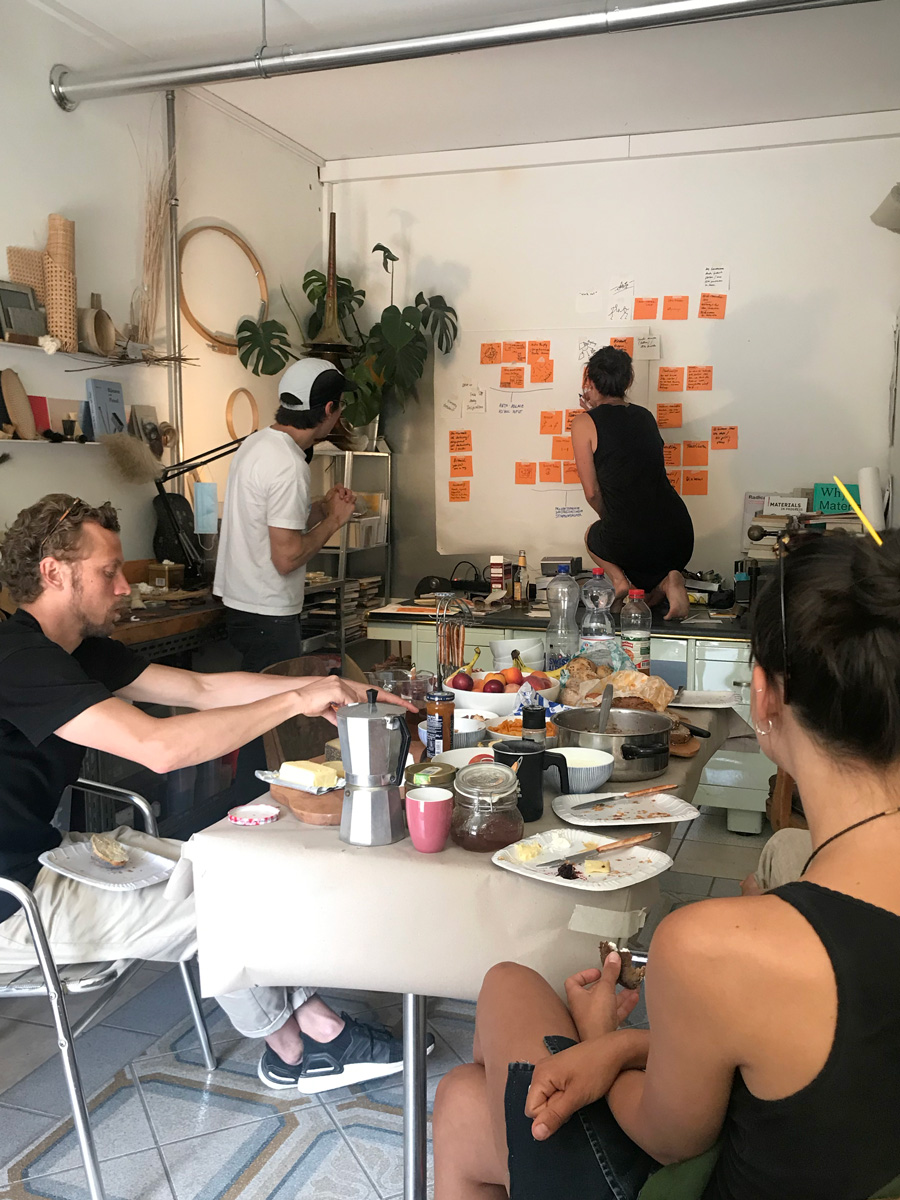
Clustering collected metaphors.

Overview of collected metaphors.
The second workshop day we began with a spatial positioning exercise proposed and guided by Soraya Blumer. The purpose was to feel out and map our self-perception within a collaborative project each of us was working on at the time. Across each of the the four axis “Theory”, “Practice”, “Individual”, and “Environment” drawn on the floor, we positioned ourselves physically. The comparison of our resulting individual mappings led to discussions about different styles of collaboration, various roles in group projects and questions of inquiring and mapping such self-reflections.

Positioning exercise.
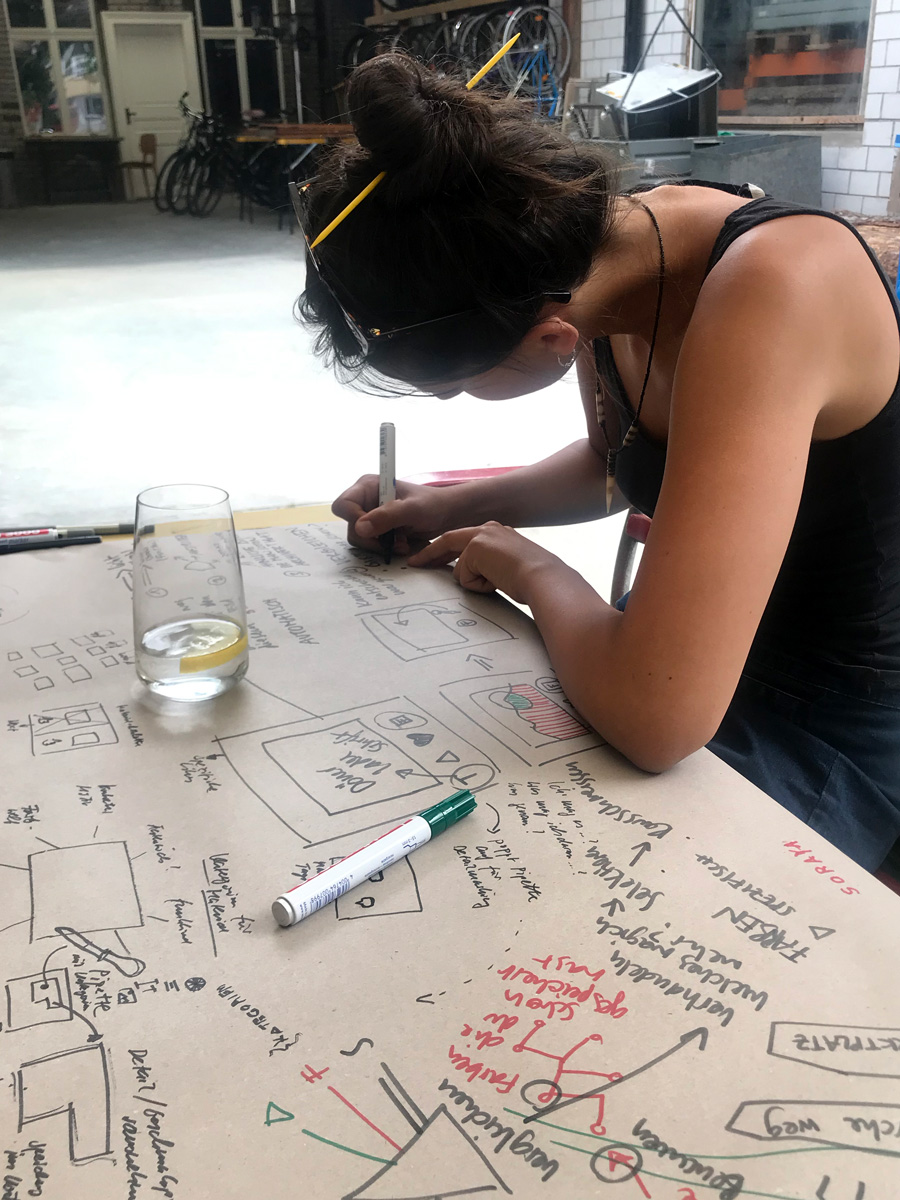
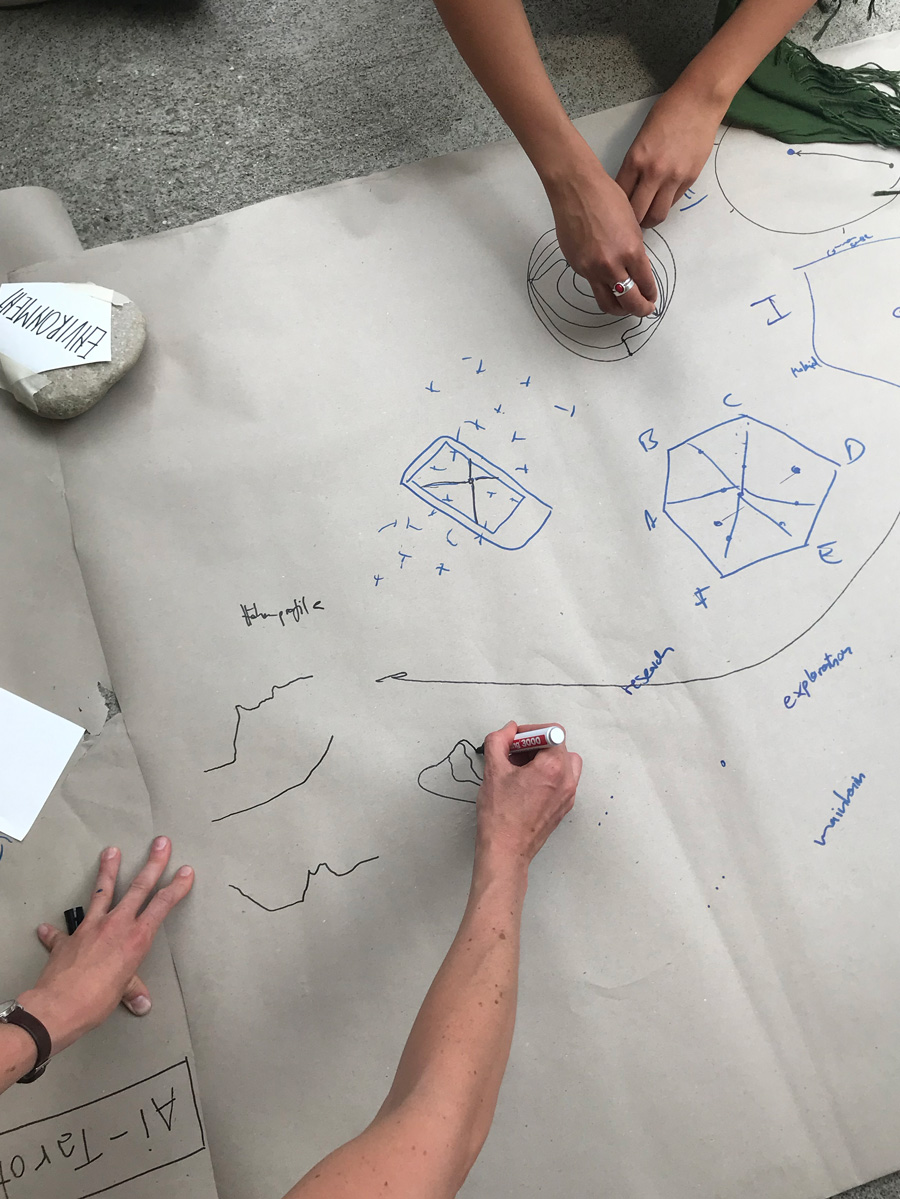
Developing tool concepts based on collected metaphors.
Workshop 2 (July 2020)
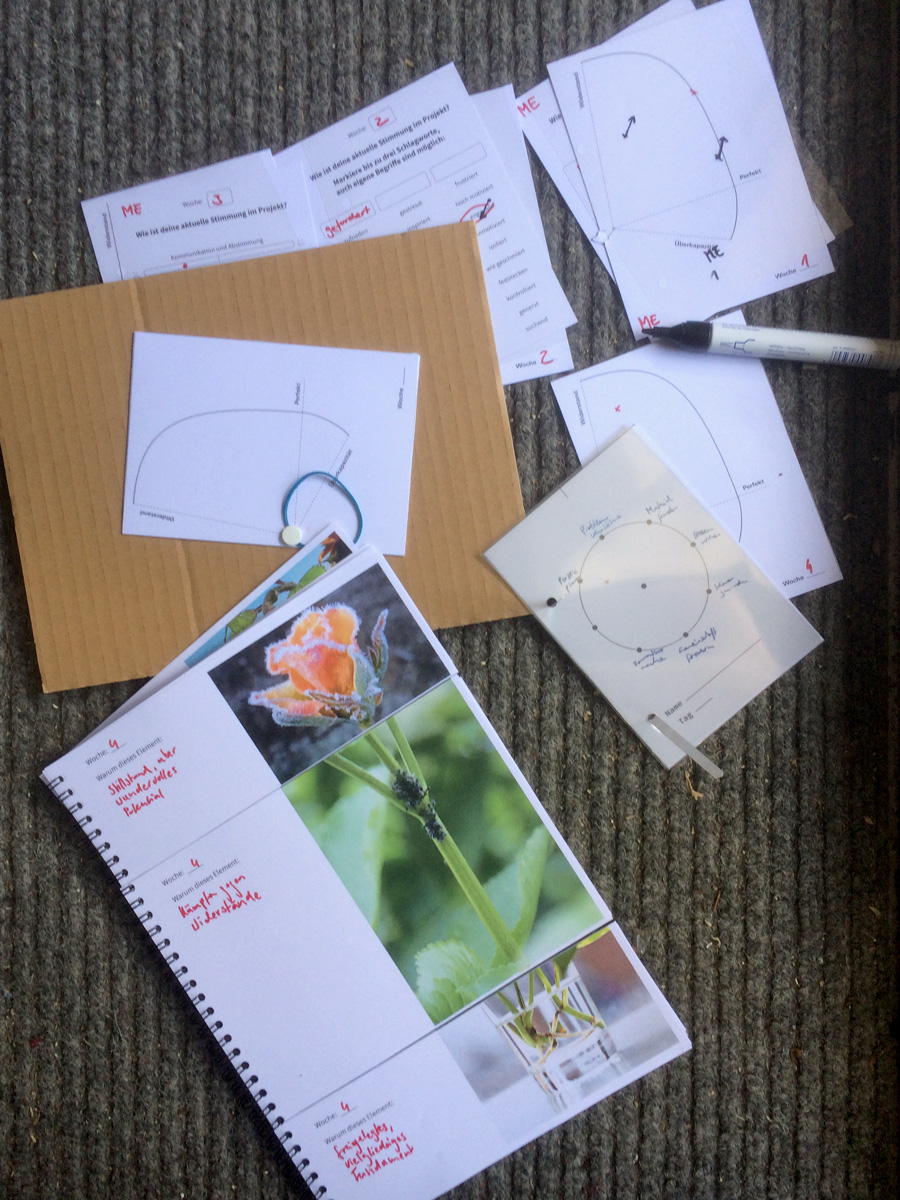
A set of the paper tools.
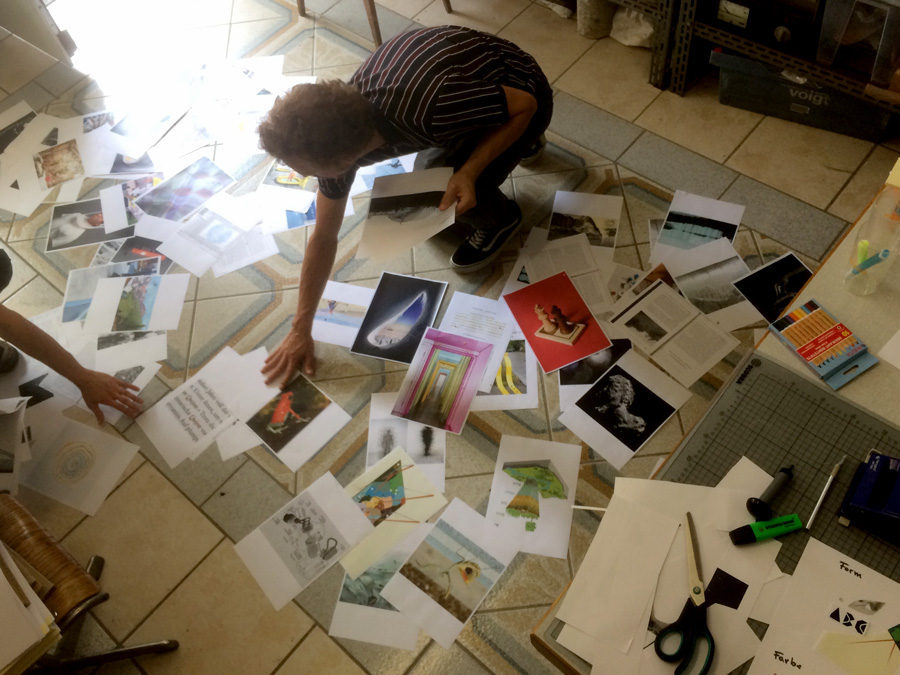

Material collection, combination and annotation.
The other three of the tool concepts variously followed the theme of the “project climate” and proposed ways of capturing and mapping the moods and progress in a collaborative project. During the workshop, we mentally went through the last 8 weeks of one of our individual real-life collaborative projects. For each week, the prepared paper tools were used to in various ways recall and document the individual work progress, changing attitudes and feelings towards the project in mind. This gave us a comparative feedback of different methods to express and reflect one’s own position in a collaborative project.

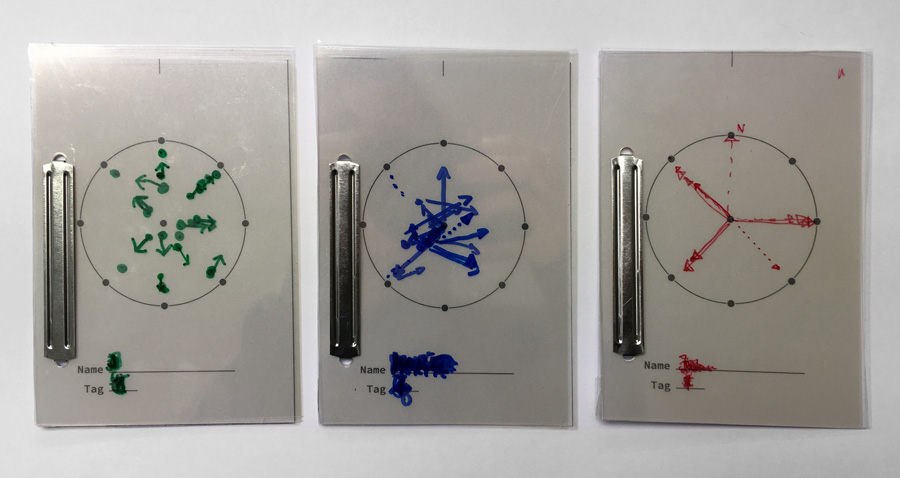
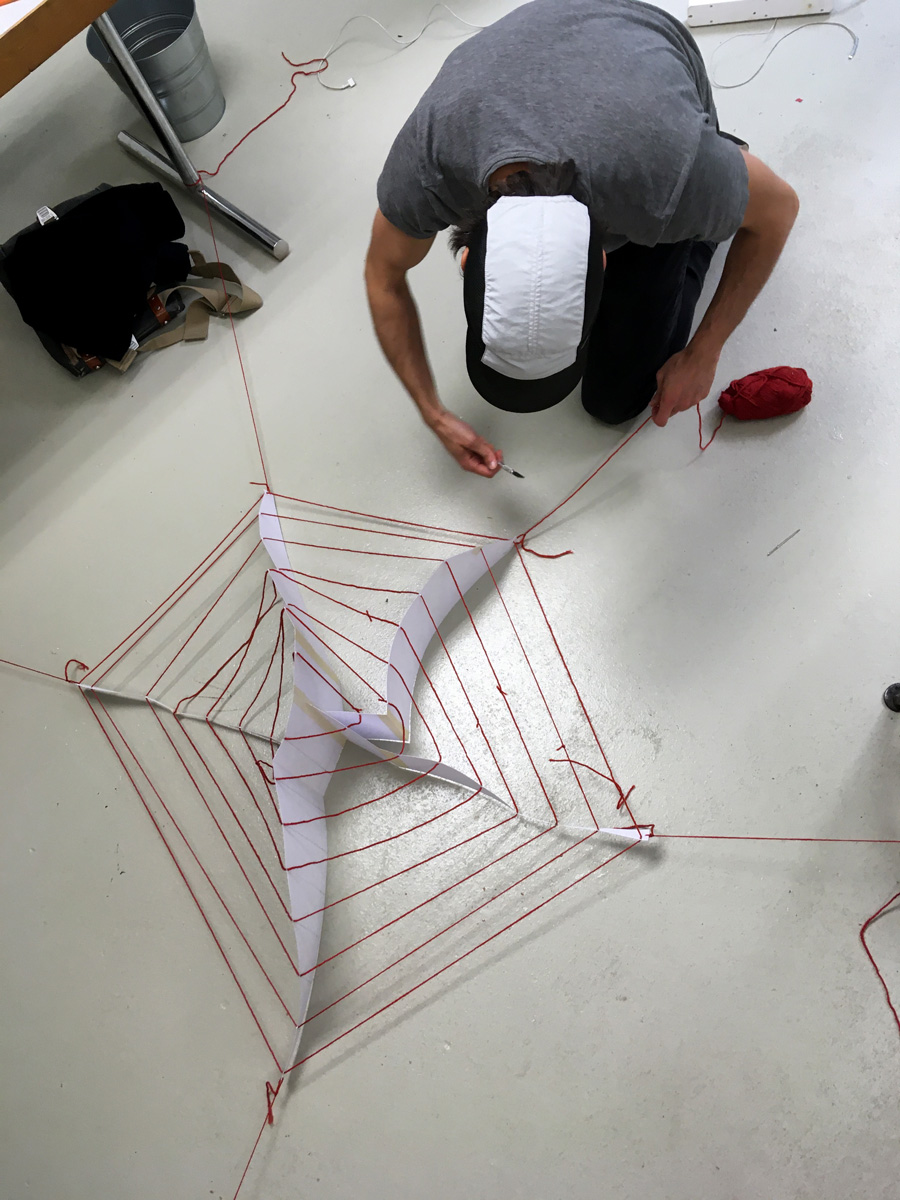
Evaluation of the various paper tools and input methods used.
The insights of this trial workshop informed the following and ongoing development of one of the tool concepts into a functioning prototype.



